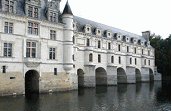|
Though the official tour only passes through the quarries in the
14th arrondissement, there are actually quarries in the other arrondissement's being the
5th, 6th, 12th, 13th, 15th, and 16th.
History Of The Catacombs
The use of the depleted quarries for the storage of bones was established in 1786 by the
order of the Lieutenant General of Police, M Thiroux de Crosne and the Inspector General
of Quarries, Charles Axel Guillaumot.
At the time, the Les Halles district in the middle of the city of Paris was suffering from disease, which was due
to contamination caused by improper burials and mass graves in church graveyards,
especially in the large Saints Innocents Cemetery. So it was decided to remove the
bones discreetly and place them in the abandoned quarries.
Remains from the cemetery of Saint-Nicolas-des-Champs were among the first to be
moved.
Bodies of the dead from the riots in the Place de Greve, the Hotel de Brienne, and Rue
Meslee were put in the catacombs on 28 August and 29 August 1788.
The catacomb walls are covered in graffiti dating from the eighteenth century onwards.
Victor Hugo utilised his knowledge about the tunnel system in Les Miserables.
In 1871 communards killed a group of monarchists in one chamber.
During World War II, Parisian members of
the French Resistance used the tunnel system. Also during this period, German
soldiers established an underground bunker in the catacombs below Lycee Montaigne, which
is a high school in the 6th arrondissement.
However, the underground tunnels and chambers have long posed safety problems for
construction in Paris. Quarries do cave in sometimes, which occasionally result in a
hole in the ground above causing damage to buildings.
To prevent this, in 1777 the IGC (Inspection Generale des Carrieres) was established to
monitor the current quarries and prohibit the digging of new quarries. However, the
IGC did dig some observation tunnels in order to provide themselves with better access to
the quarries so that they could monitor, repair, and map the consolidated quarries.
The monitoring and consolidation work has continued to this day. Because of the
number of quarries, subway tunnels, train tunnels and sewer tunnels that have been dug
underneath Paris, as well as the softness of the stone involved, extra caution is taken
when new construction is attempted or new tunnels are dug.
The catacombs today
Entrance to the catacombs is restricted. The portion of the catacombs open to the public
is only a small part of an extensive network of underground tunnels, which spans more than
300km.
The tunnel system is complex, and though some tunnels have plaques indicating the name of
the street above, it is still quite easy to get lost with some passages being extremely
low or narrow and others that are partially flooded.
There are also aging telephone wires, pipes, etc. that can hinder progress, and cave-ins,
although rare, do occasionally occur. So a good guide is therefore necessary, even
though many of the good guides will still refer to a map from time to time.
Because of these potential dangers, since 2 November 1955 it has been illegal to access
the catacombs unescorted by officials and there are special police who patrol the
catacombs.
However, secret entrances do exist throughout Paris
and it is possible to enter the catacombs via the sewers, metro, and certain
manholes. Some unofficial visitors also hold keys to certain official
entrances.
On rare occasions people do make use of these access points and illegally enter the
catacombs for reasons such as to hold an unusual meeting or party or simply as urban
explorers.
Did you know that for those people that have an affinity for exploring the catacombs are
known as cataphiles?
And for those who frequent the tunnels, whether it be by official or unofficial means,
there is a cataphile etiquette that includes leaving no garbage behind, never leaving
entrances such as manholes open, and never doing any form of graffiti.
|
|



